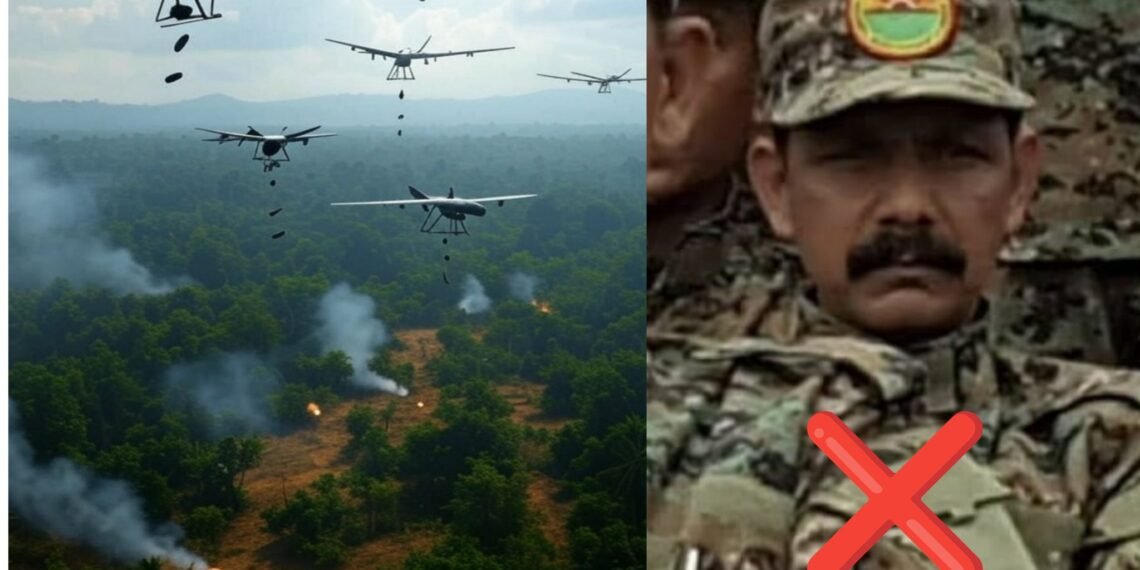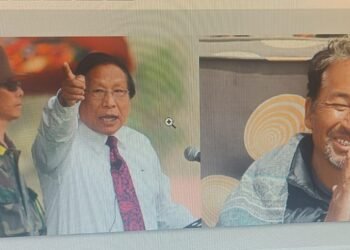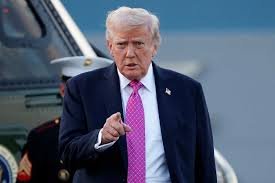In a major escalation, the Revolutionary People’s Front (RPF) — political arm of Manipur’s PLA — has confirmed an Indian Army drone strike on joint insurgent camps with ULFA (I) near the Myanmar border.
BY PC Bureau
New Delhi, July 14, 2025 — A day after the United Liberation Front of Asom (Independent) — ULFA (I) — alleged a drone strike by Indian Special Forces on its camps along the Myanmar-Nagaland border, another insurgent group, the Revolutionary People’s Front (RPF), has now confirmed the same attack, further escalating tensions in India’s northeastern frontier.
In a press release dated July 14, the RPF — the political wing of the People’s Liberation Army (PLA) of Manipur — claimed that over 150 bombs were dropped on four camps jointly operated by ULFA (I) and PLA militants in a drone offensive launched around midnight on July 12. The attack reportedly lasted until 4:00 AM the next morning.
According to the RPF, Lt. General Nayan Asom, Chairman of ULFA (I)’s Lower Council, was killed, and several ULFA (I) cadres were injured in the strike. The PLA side reportedly did not suffer casualties. The group condemned the attack, describing it as an act of war, and expressed “deepest condolences” to the fallen, calling them “heroes who gave their lives for their country.”
🔵𝐃𝐫𝐨𝐧𝐞 𝐒𝐭𝐫𝐢𝐤𝐞 𝐨𝐧 𝐔𝐋𝐅𝐀-𝐈 𝐚𝐧𝐝 𝐏𝐋𝐀 𝐂𝐚𝐦𝐩𝐬? 𝐑𝐏𝐅 𝐂𝐥𝐚𝐢𝐦𝐬 𝐎𝐯𝐞𝐫 𝟏𝟓𝟎 𝐁𝐨𝐦𝐛𝐬 𝐃𝐫𝐨𝐩𝐩𝐞𝐝 𝐛𝐲 𝐔𝐧𝐤𝐧𝐨𝐰𝐧 𝐅𝐨𝐫𝐜𝐞𝐬.. pic.twitter.com/sTee1Ym0Ab
— THE UNKNOWN MAN (@Theunk13) July 14, 2025
This is the second confirmation in 24 hours by a northeast insurgent group about such a military action — even as the Indian Army and Defence Ministry have neither confirmed nor commented on the reported operation.
Both the e RPF and PLA have been engaged in armed conflict against the Indian Armed Forces, targeting the Indian Army, paramilitary forces, and state police. They have also been involved in extortion operations. Both are banned by the Government of India as terror outfits.
RPF Labels India as “Occupier,” Warns of Retaliation
In its statement, the RPF accused the Indian government of conducting proxy wars and targeted killings to suppress what it described as “independent national movements” in Manipur and Assam. The press note said:
“The drone attacks and proxy wars initiated by Indian Army against PLA and ULFA (I) clearly reveal the true nature and intention of India… We were not Indian and we were independent kingdoms.”
READ: AI171 Report Finds No Tech Faults, Air India CEO Confirms
Calling India the “Archenemy of Manipur and Assam,” the RPF urged the people of both regions to resist what it termed “Indian occupation.” The group warned that the people “should not be blinded by the deceptions and temptations of the Indian Government.”
The RPF also made a veiled threat of retaliation, stating it is high time for citizens to “defend our country and resist Indian occupation.”
Military Silence, Strategic Shift Suspected
While there has been no official response from the Indian armed forces or the Ministry of Defence regarding the drone strike, the back-to-back confirmations from ULFA (I) and now the RPF may indicate a new strategic approach by Indian security forces in dealing with long-standing insurgent strongholds operating from Myanmar’s dense jungles and border regions.
Security analysts say that India’s use of precision drone strikes, if confirmed, would mark a tactical evolution in counterinsurgency efforts and signal zero tolerance for cross-border safe havens. However, the lack of official acknowledgement also raises concerns about escalation and the fragile ceasefire understandings in some parts of the Northeast.
READ: UFO Collision With F-16 Sparks Airspace Security Debate
ULFA (I), led by Paresh Baruah, has long operated from camps in Myanmar’s Sagaing and Chin regions, often in collaboration with other outfits like the NSCN-K and the PLA of Manipur, which falls under the RPF umbrella.
India has repeatedly urged Myanmar to dismantle these camps. In the past, Indian forces have conducted limited “hot pursuit” operations, most notably the 2015 cross-border raid following an ambush on Indian soldiers in Manipur.
The latest reported drone offensive — if confirmed — could be the most significant escalation since then.
With two major insurgent groups publicly confirming drone strikes and one of them suffering leadership-level casualties, retaliation cannot be ruled out. Intelligence agencies are reportedly on alert across Assam and Manipur, while additional paramilitary reinforcements have been discreetly moved to sensitive zones.
Observers believe this development could trigger a renewed phase of armed confrontation unless diplomatic and security channels manage to contain the fallout.













